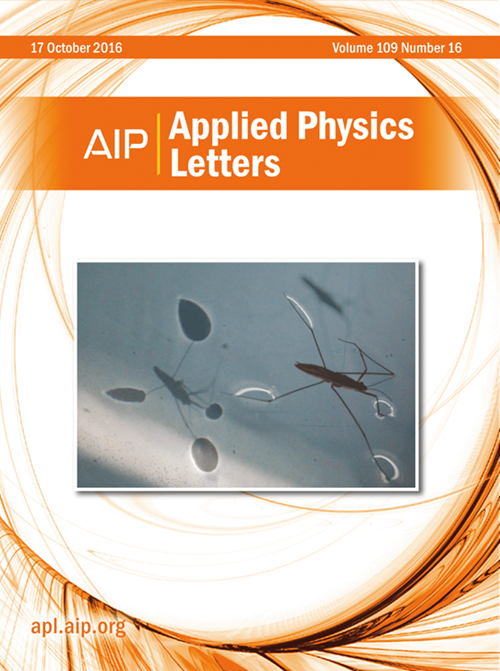Enhancing carrier dynamics via phase manipulation of dual-phase all-inorganic perovskites for high-performance photodetectors
IF 3.5
2区 物理与天体物理
Q2 PHYSICS, APPLIED
引用次数: 0
Abstract
Cesium lead bromide perovskites have demonstrated enormous potential in detecting applications, benefitting from their excellent optoelectronic properties and environmental stability. However, their intrinsic properties of photoluminescence intensity and carrier lifetime, key to photodetector performance, are still limited with conventional approaches (e.g., material purification and defect passivation). Here, we propose an efficient ultrasound-assisted growth method to manipulate the crystal phase of all-inorganic perovskites. Morphological, structural, and elemental characteristics of perovskites are comprehensively investigated, confirming the formation of CsPb2Br5–CsPbBr3 dual-phase (DP) perovskites. The fabricated DP perovskites exhibit enhanced carrier dynamics compared to CsPbBr3 quantum dots (QDs), including over a tenfold increase in photoluminescence intensity and an extended carrier lifetime of 656 ns. Such impressive improvements originate from the repeated radiative recombination introduced by the hierarchical phase of DP perovskites. As a result, the DP perovskite-based photodetector also demonstrates improved photoresponse, including a larger on/off ratio exceeding 103 and a higher detectivity of 1.48 × 1010 Jones, especially in the absence of conventional transporting layers. These results offer strong competitiveness for state-of-the-art perovskite photodetectors and deliver important implications for the widespread use of DP perovskites in assembling high-performance optoelectronic devices.求助全文
约1分钟内获得全文
求助全文
来源期刊

Applied Physics Letters
物理-物理:应用
CiteScore
6.40
自引率
10.00%
发文量
1821
审稿时长
1.6 months
期刊介绍:
Applied Physics Letters (APL) features concise, up-to-date reports on significant new findings in applied physics. Emphasizing rapid dissemination of key data and new physical insights, APL offers prompt publication of new experimental and theoretical papers reporting applications of physics phenomena to all branches of science, engineering, and modern technology.
In addition to regular articles, the journal also publishes invited Fast Track, Perspectives, and in-depth Editorials which report on cutting-edge areas in applied physics.
APL Perspectives are forward-looking invited letters which highlight recent developments or discoveries. Emphasis is placed on very recent developments, potentially disruptive technologies, open questions and possible solutions. They also include a mini-roadmap detailing where the community should direct efforts in order for the phenomena to be viable for application and the challenges associated with meeting that performance threshold. Perspectives are characterized by personal viewpoints and opinions of recognized experts in the field.
Fast Track articles are invited original research articles that report results that are particularly novel and important or provide a significant advancement in an emerging field. Because of the urgency and scientific importance of the work, the peer review process is accelerated. If, during the review process, it becomes apparent that the paper does not meet the Fast Track criterion, it is returned to a normal track.
 求助内容:
求助内容: 应助结果提醒方式:
应助结果提醒方式:


